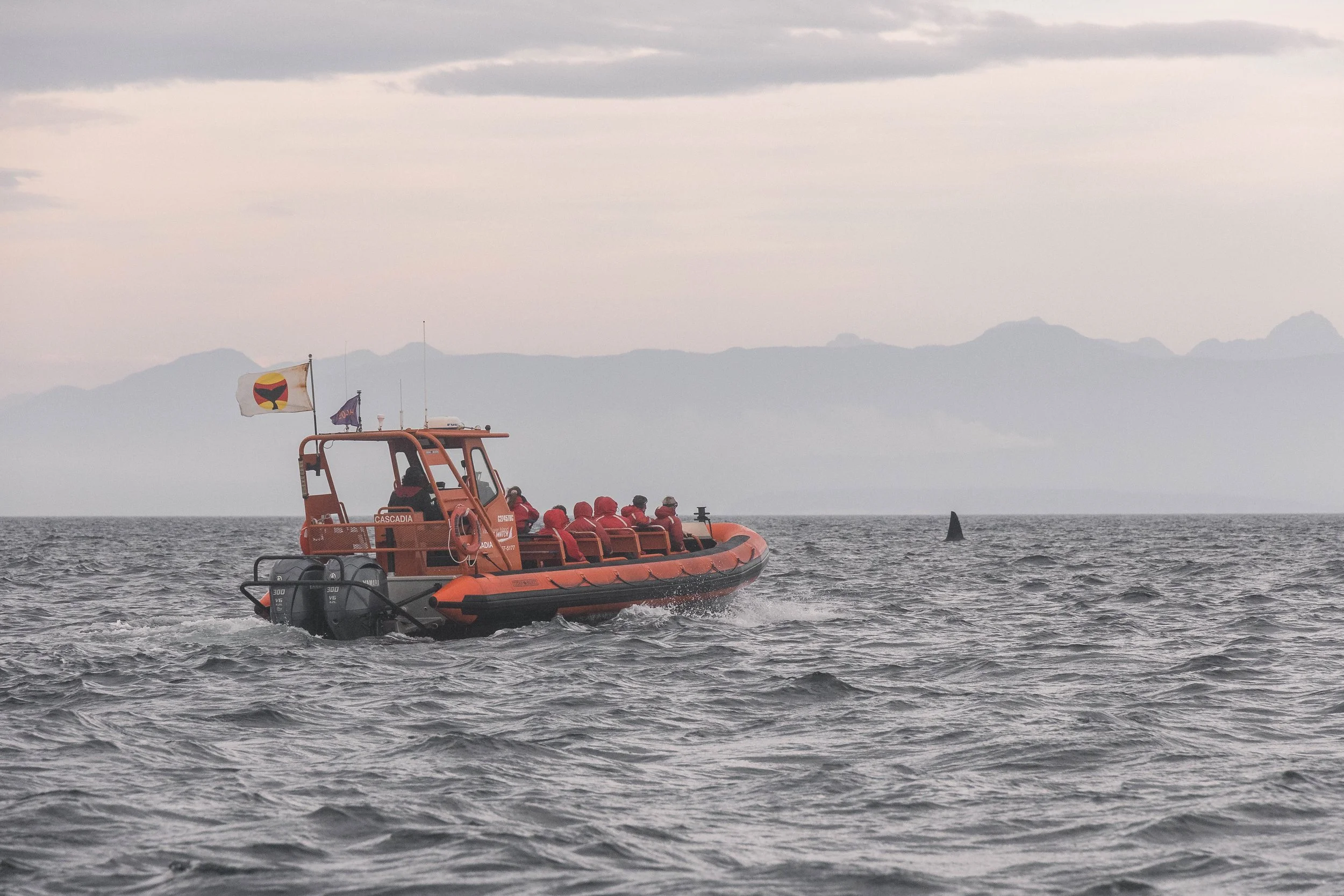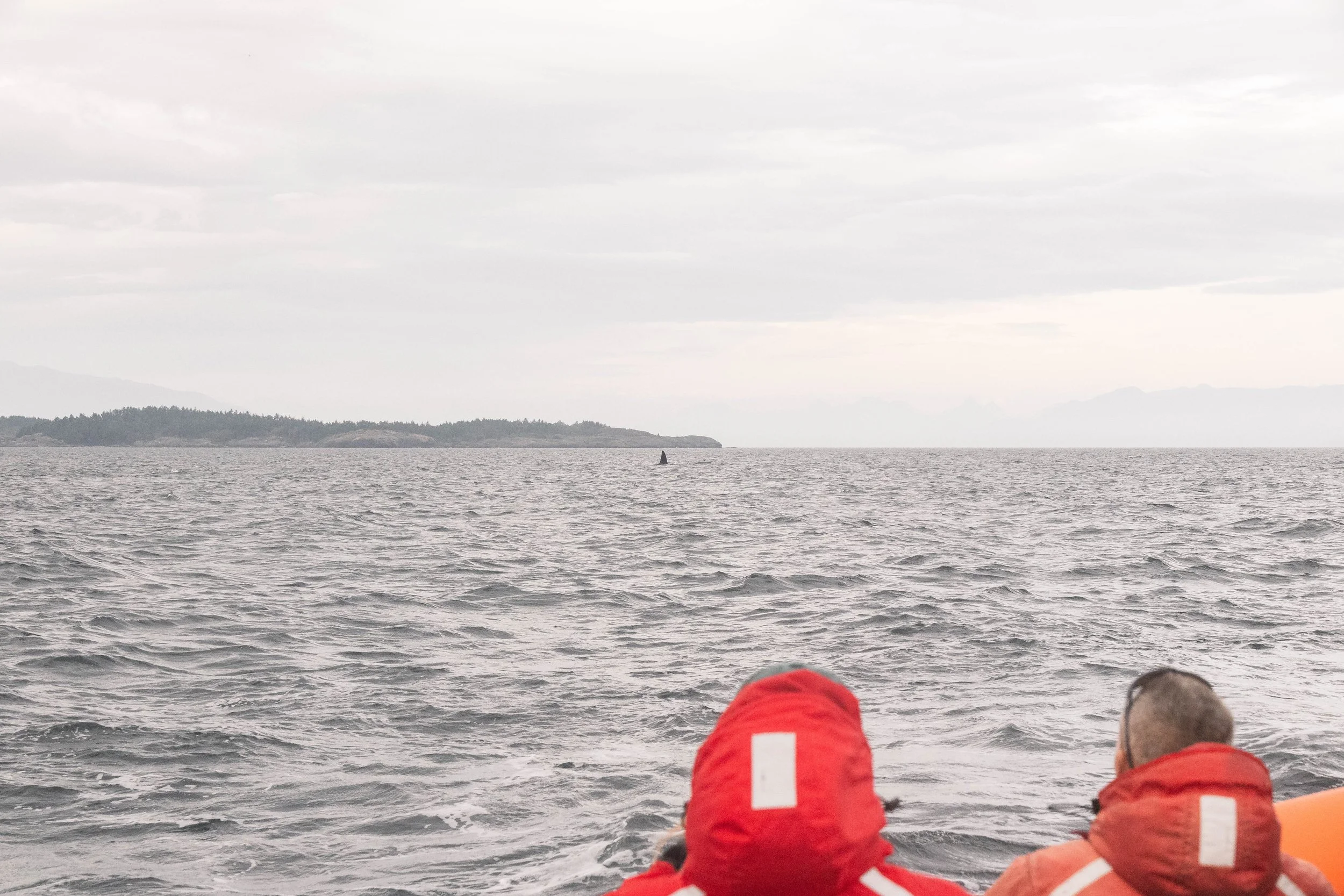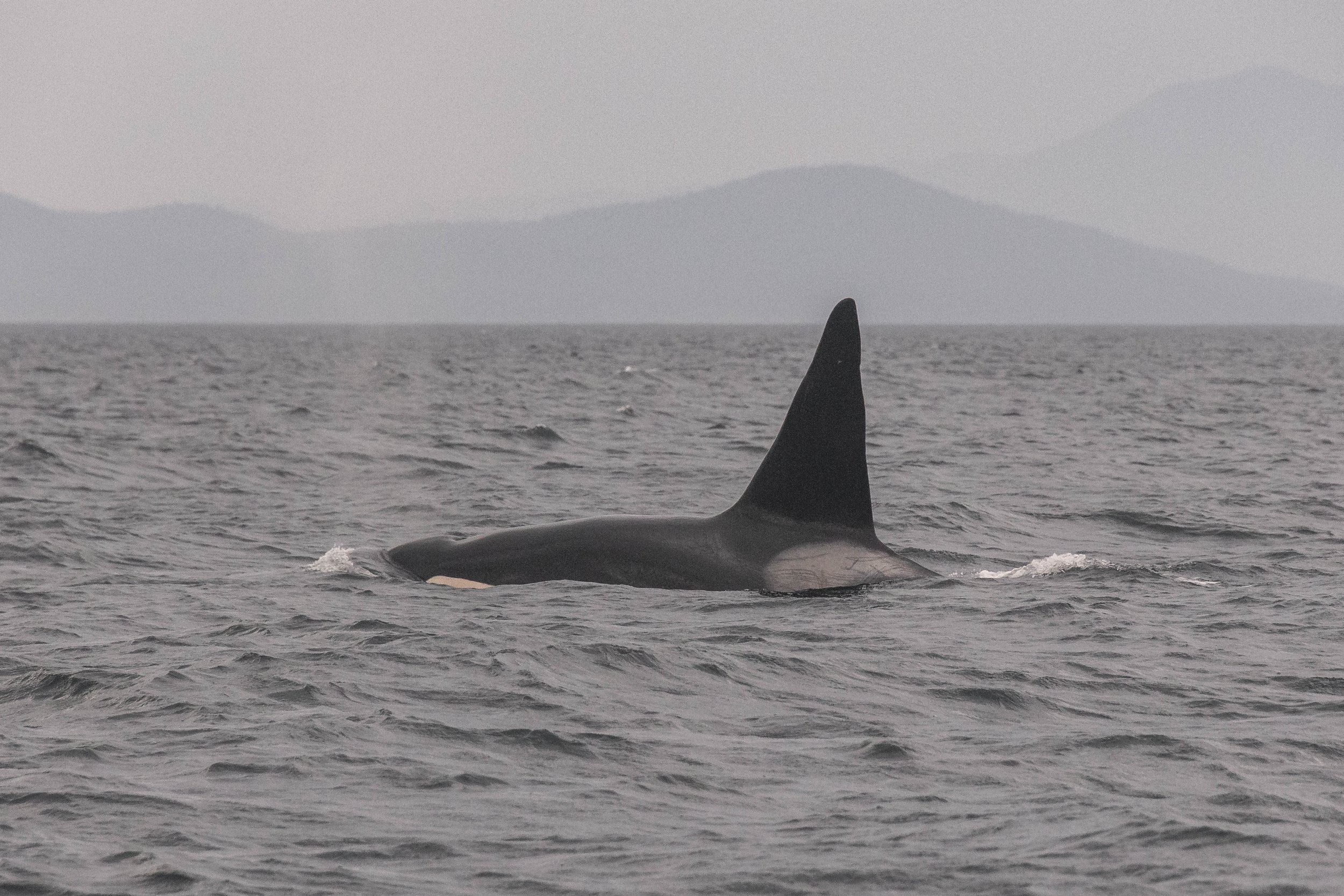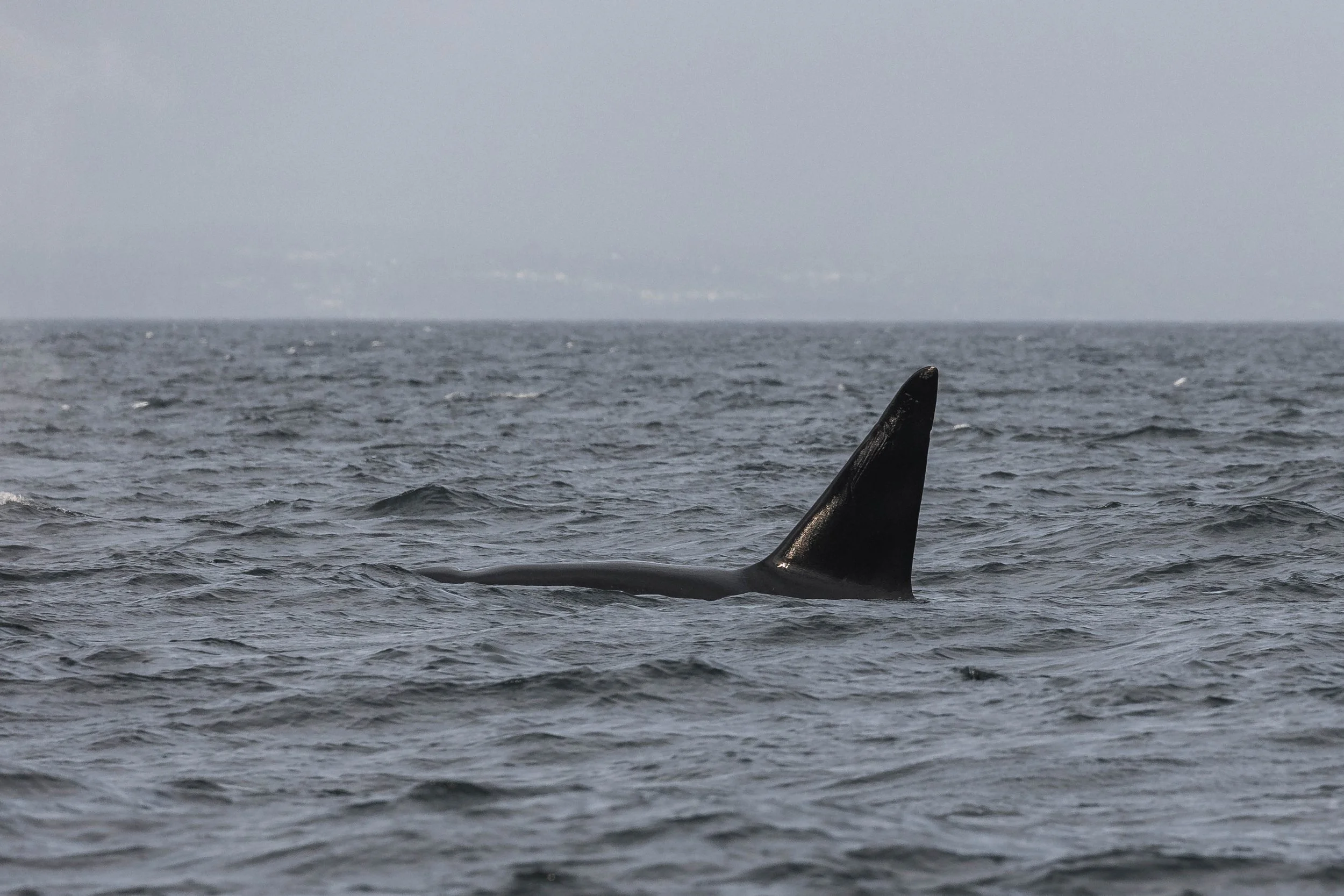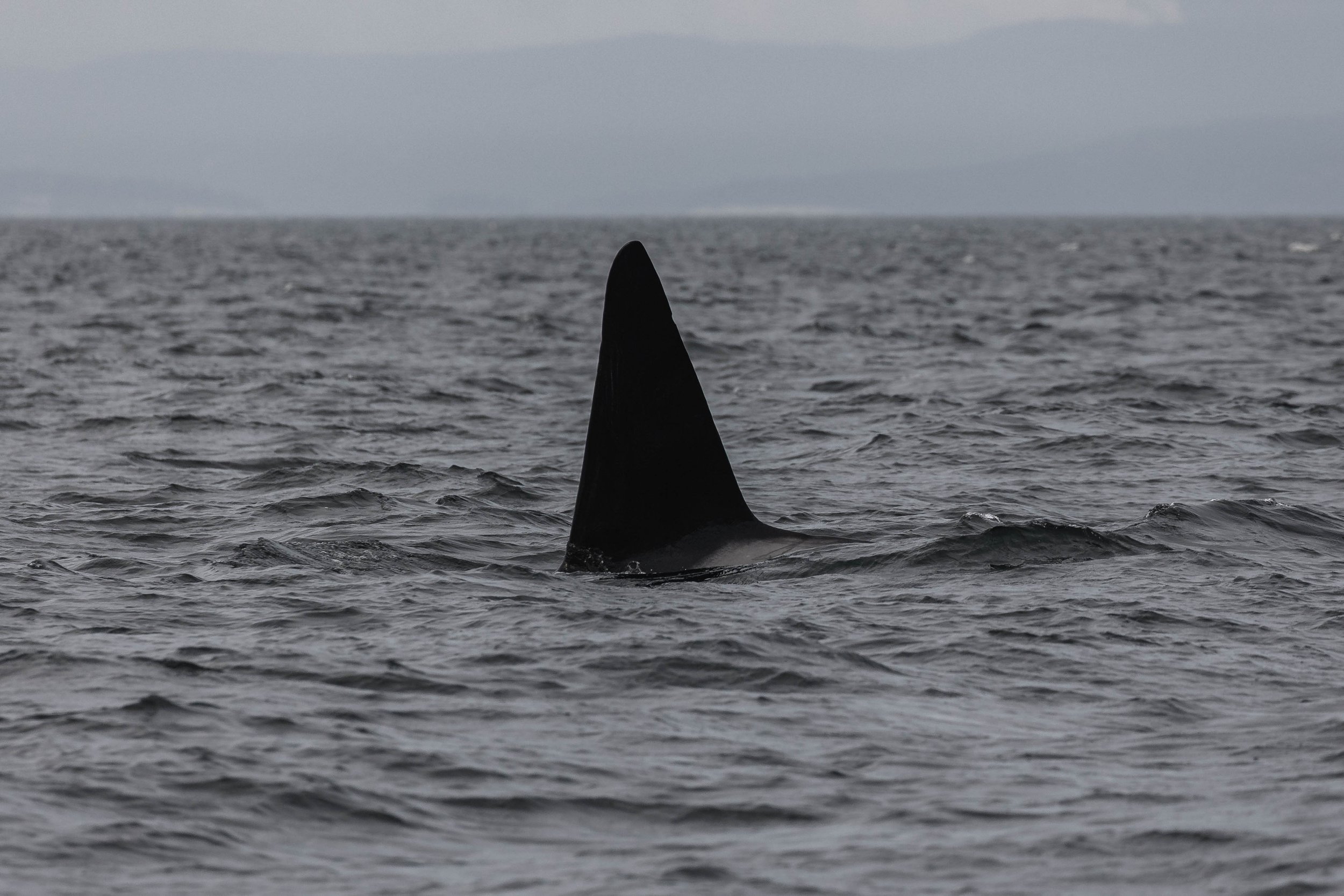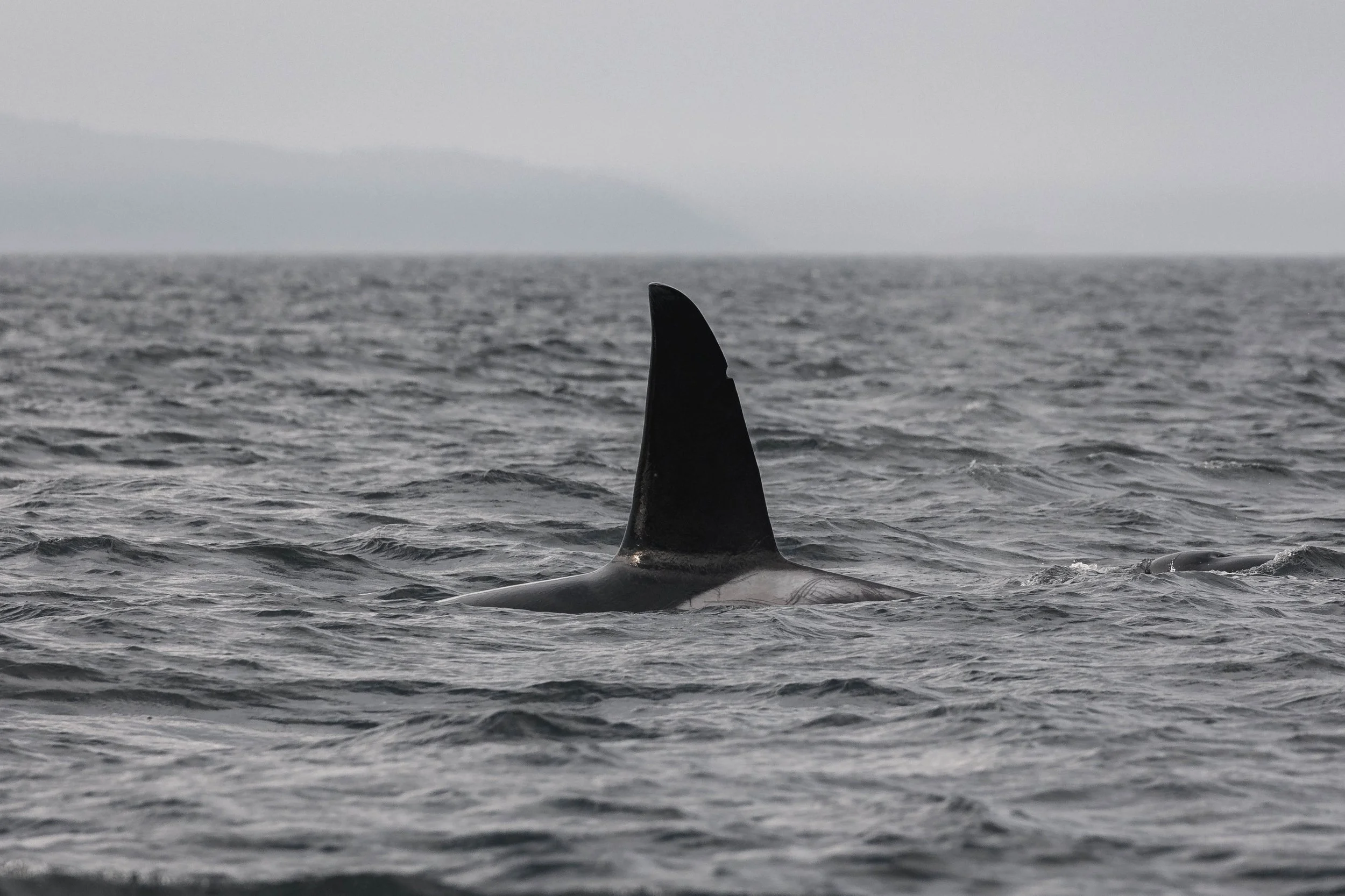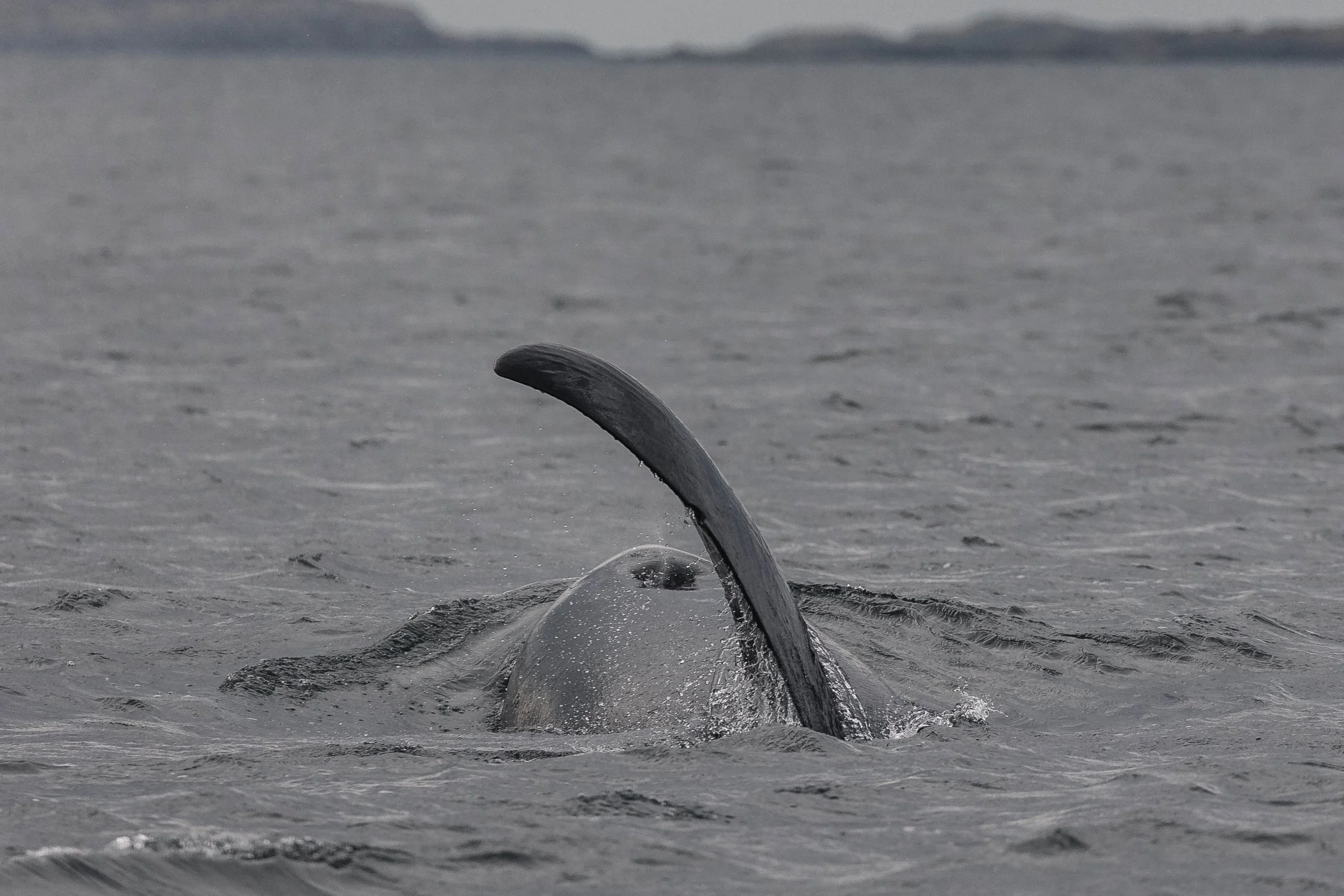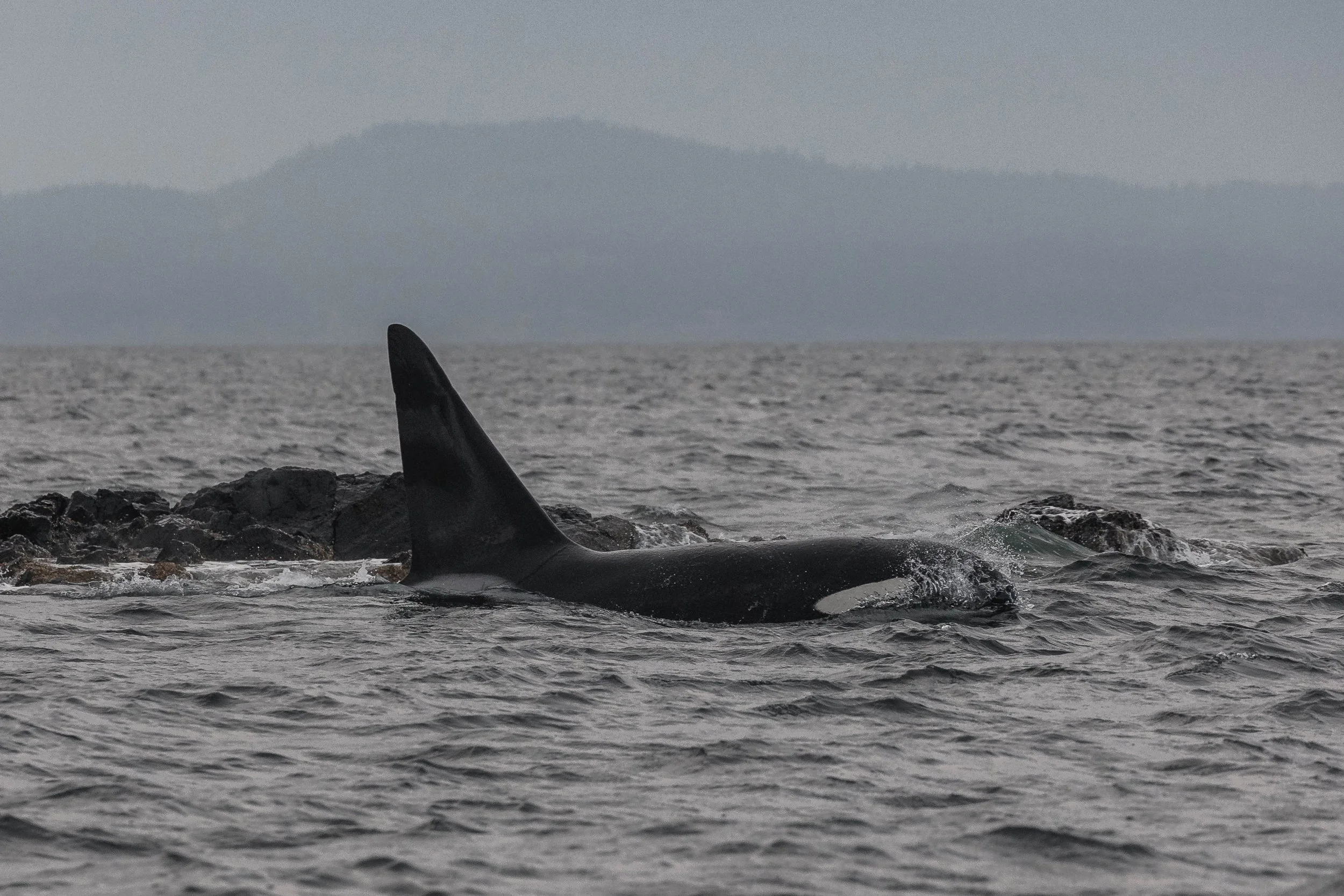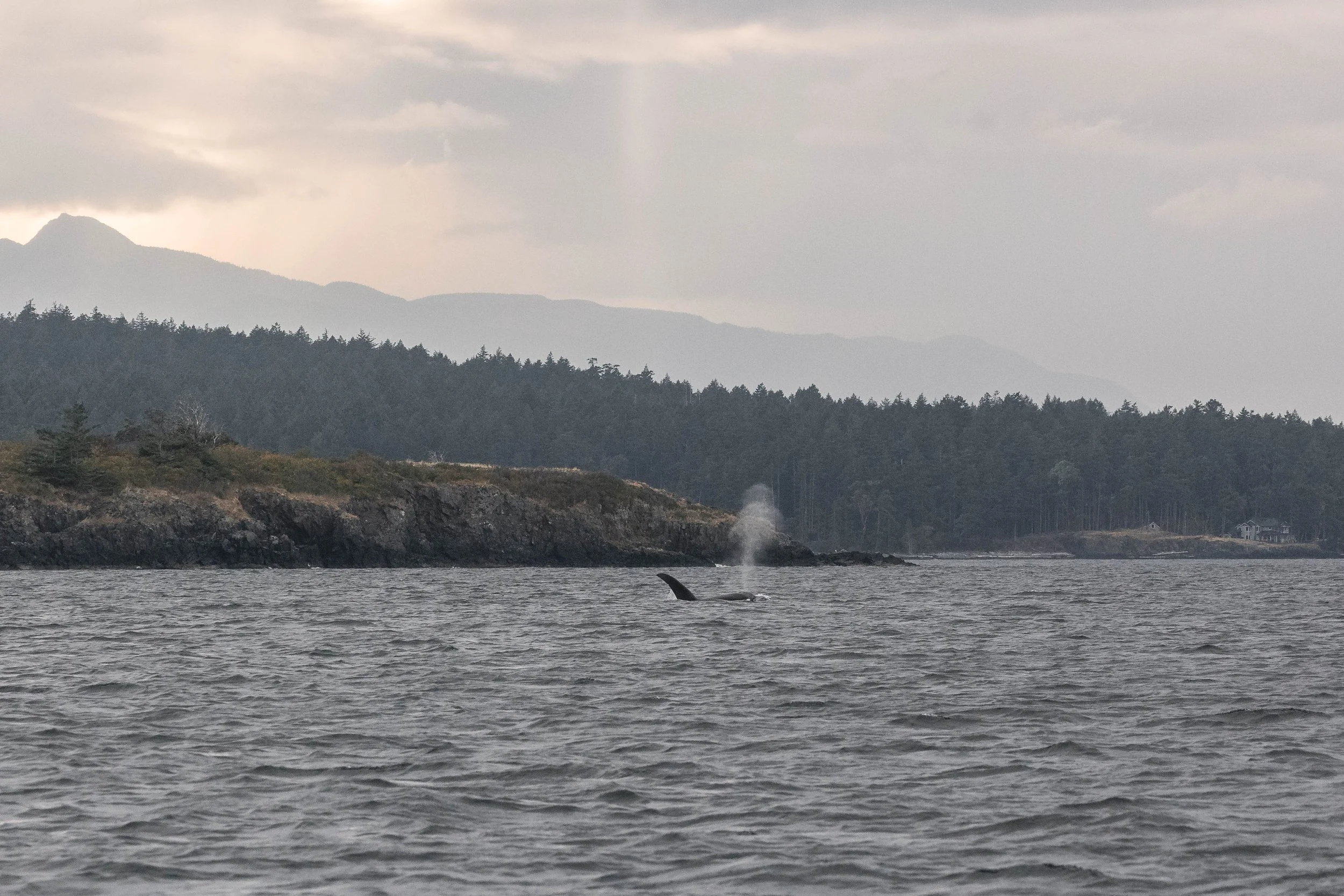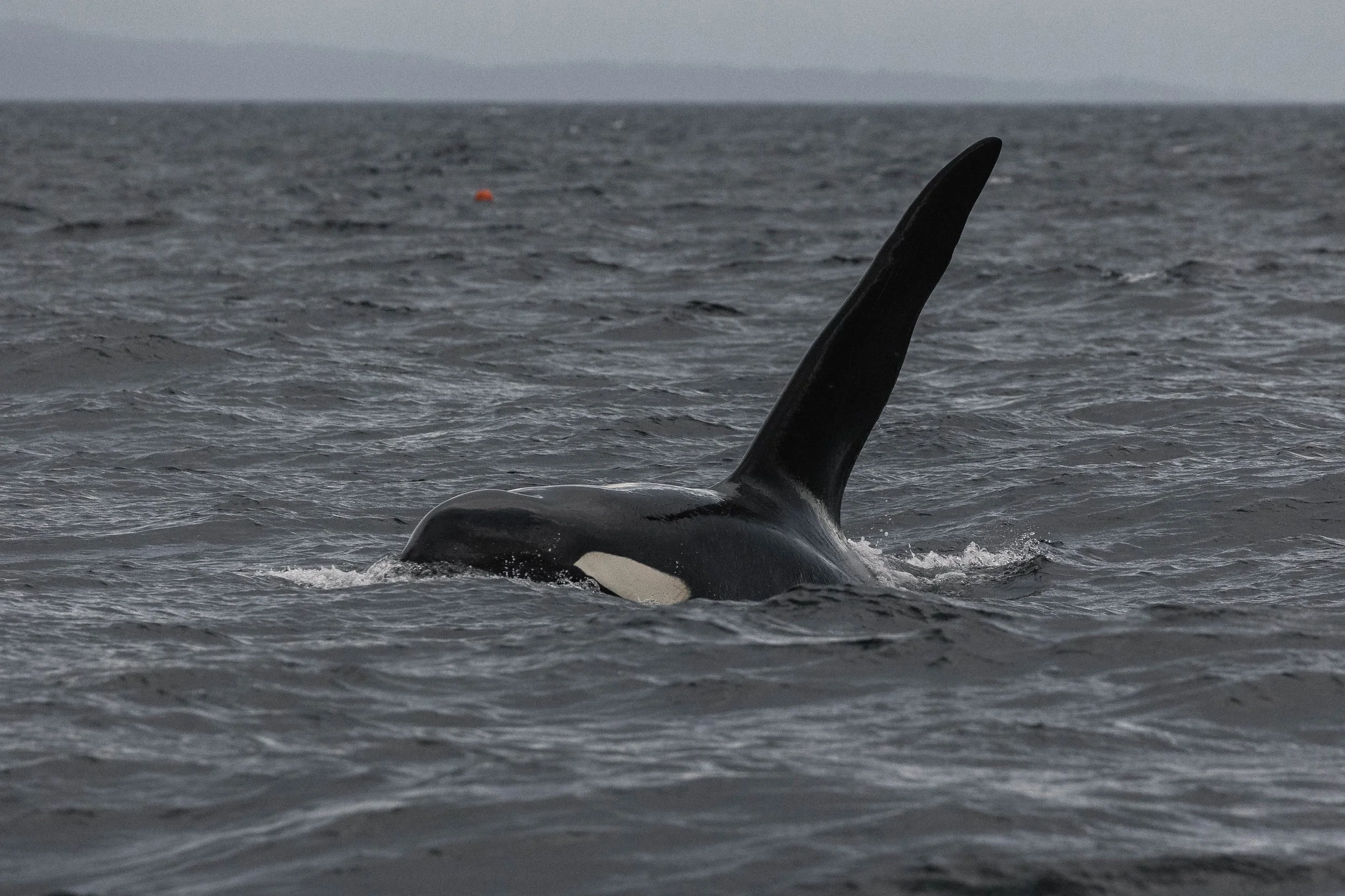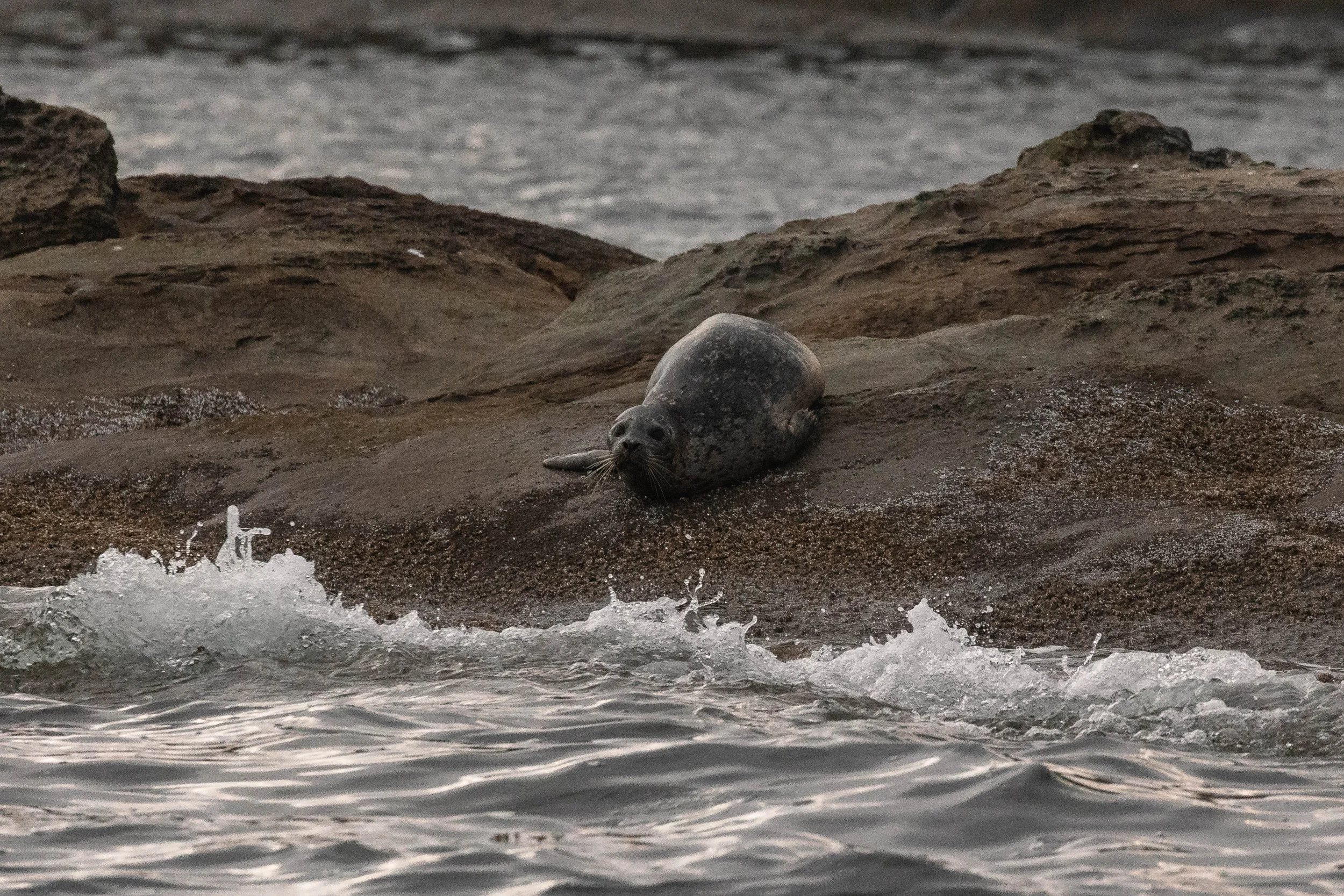September 13, 2025, 3:30 PM - Up north with the T019s
This afternoon, both of our open boats left the dock with calm seas and clear skies, setting out to explore north along the shores of Nanaimo. It’s always a thrill to head into these waters, not just for the possibility of finding whales, but for the remarkable geography and history of the Salish Sea itself.
The Salish Sea is a vast inland sea stretching from southern British Columbia into Washington State. It is dotted with over 400 islands, ranging from large, forested landscapes like Gabriola and Galiano to smaller rocky islets that barely break the surface at high tide. These islands are the product of powerful geological forces.
During the last Ice Age, massive glaciers scoured the land, carving deep fjords and channels. As the ice retreated around 12,000 years ago, seawater flooded in, leaving behind the intricate network of waterways we see today. The result is a mosaic of straits, passes, and sheltered bays that provide habitat for an astonishing variety of marine life and serve as a natural hunting ground for orca.
Transient orca are apex predators perfectly adapted to this environment. Unlike their fish-eating cousins, these orca hunt marine mammals, and they use the geography of the Salish Sea to their advantage. Steep underwater walls, narrow channels, and kelp-lined shorelines allow them to ambush unsuspecting prey.
On average, transient orca travel between 50 and 150 kilometres (30 and 90 miles) in a single day, constantly moving in search of food. An adult can eat up to 100-300 pounds of meat in a day, depending on prey availability. Their movement patterns may seem unpredictable to us, but they are intimately tied to the rhythms of their prey: seals, sea lions, and porpoises, which also use the islands as shelter and hunting grounds.
Today, our travels brought us alongside the T019s, a well-known matriarchal family that has been observed in the Salish Sea for decades.
T019 Nootka ♀ (~1965)
T019B Galiano ♂ (1995)
T019C Spouter ♂ (2001)
We watched as they travelled methodically along the shoreline, scanning and listening for signs of prey. Their surfacing rhythm was steady, a reminder of just how far these animals can travel as they patrol their range.
As we branched off from the whales later in the afternoon, we shifted our focus to some of the other residents of these waters: harbour seals. These small, round-eyed pinnipeds are a vital part of the ecosystem and one of the favourite meals of Bigg’s orca.
Harbour seals are excellent hunters in their own right. They use the structure of the Salish Sea to ambush schools of fish, tucking themselves among rocky outcroppings or diving into kelp forests where prey is abundant. Their cryptic, mottled coats provide camouflage both above and below the surface, making it easier to surprise fish. And when they aren’t feeding, they haul out on the same rocky islets that the glaciers left behind, resting and warming themselves before slipping back into the sea.
What struck us today was just how interconnected everything is here. The glaciers shaped the islands. The islands shape how the seals hunt and rest. The seals, in turn, shape how the orca travel, forage, and survive. Every ridge and channel in this inland sea tells a story of adaptation, survival, and balance.
After leaving the T019s to continue on their way and watching the seals tucked safely on the rocks, we turned back toward home. The Salish Sea reminded us today not just of its beauty, but of its complexity. Each trip reveals another layer of how this ecosystem functions, showing how predators and prey utilize the same islands and currents in different ways, and how the geography holds the entire system together, having been carved thousands of years ago.
Please enjoy all the photos captured by the Marine Naturalists onboard our vessels, Desarae Poier and Jordan Robinson, below!
T019 Nootka sufacing in front of Winchealsea Island. Photo by Desarae Poier.
Beautiful sunlight breaking through the clouds. Photo by Desarae Poier.
T019B Galiano travelling in the waves. Photo by Desarae Poier.
Whale Watchers onboard Cascadia watching T019B Galiano. Photo by Desarae Poier.
A couple of whale watchers on Keta watching T019B Galiano. Photo by Desarae Poier.
T019C Spouter travelling by. Photo by Desarae Poier.
T019C Spouter with his eye patch peeking above the waves. Photo by Desarae Poier.
T019C Spouter travelling in the waves. Photo by Jordan Robinson.
You can see how wavy T019C Spouter’s dorsal fin is from this photo. Photo by Jordan Robinson.
You can spot some of the scarring on T019C Spouter’s saddle patch. Photo by Jordan.
T019B Galiano also has a unique dorsal fin shape, this time with a curve to the left. Photo by Jordan Robinson.
Whale watchers onboard Keta watching the T019s. Photo by Jordan Robinson.
A look from behind T019B Galiano as he surfaces. Photo by Jordan Robinson.
From this angle, T019B Galiano’s dorsal fin lean is very obvious! Photo by Jordan Robinson.
Can you spot the dent in T019C Spouter’s dorsal fin here? Photo by Jordan Robinson.
A great look at T019C Spouter as he cruises the shoreline looking for a snack. Photo by Jordan Robinson.
T019B Galiano surfacing at a distance, showing off the beautiful scenery of the Winchelsea Island Archepelago. Photo by Jordan Robinson.
T019C Spouter surfacing in front of the Coastal Mountains. Photo by Jordan Robinson.
A great look at T019C Spouter’s eye patch as he surfaces. Photo by Jordan Robinson.
T019C Spouter surfacing in the snuset colours. Photo by Jordan Robinson.
All the scarring on T019C Spouter’s saddle patch is likely left behind by their prey. Photo by Jordan Robinson.
A Harbour Seal watching us from the rocks. Do they know they were nearly dinner? Photo by Jordan Robinson.




